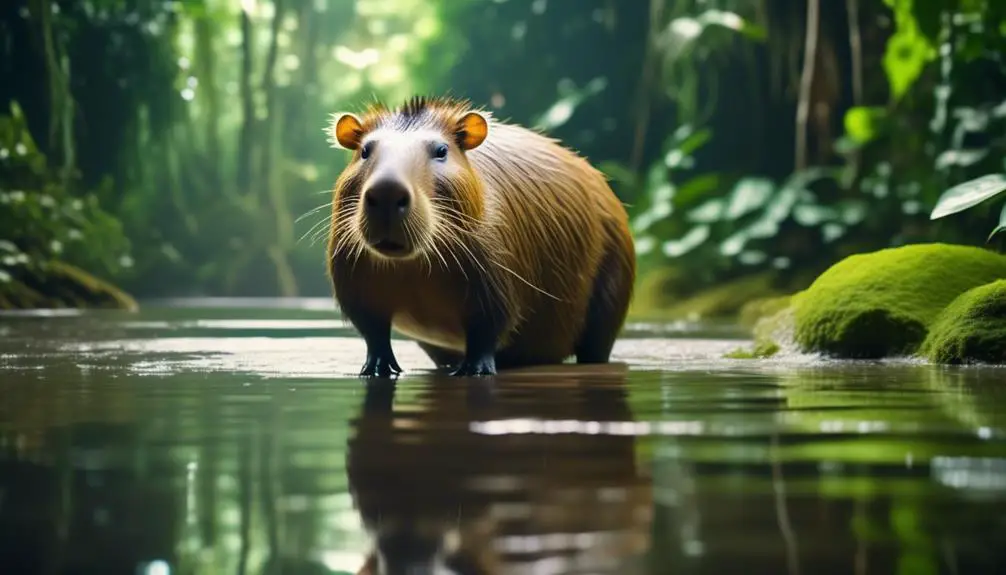Do you ever wonder about the largest rodents in the world?
These incredible creatures, like behemoths of the animal kingdom, possess an astonishing size that rivals their small mammalian counterparts. But what sets them apart? What makes these rodents so fascinating and unique?
Well, get ready to embark on a journey of discovery as we uncover the secrets of their impressive size, their remarkable adaptations, and the diverse habitats they call home.
From the mighty Capybara to the industrious North American Beaver, prepare to be amazed by the world’s largest rodents and the captivating stories they have to tell.
Capybara: Largest Rodent in South America
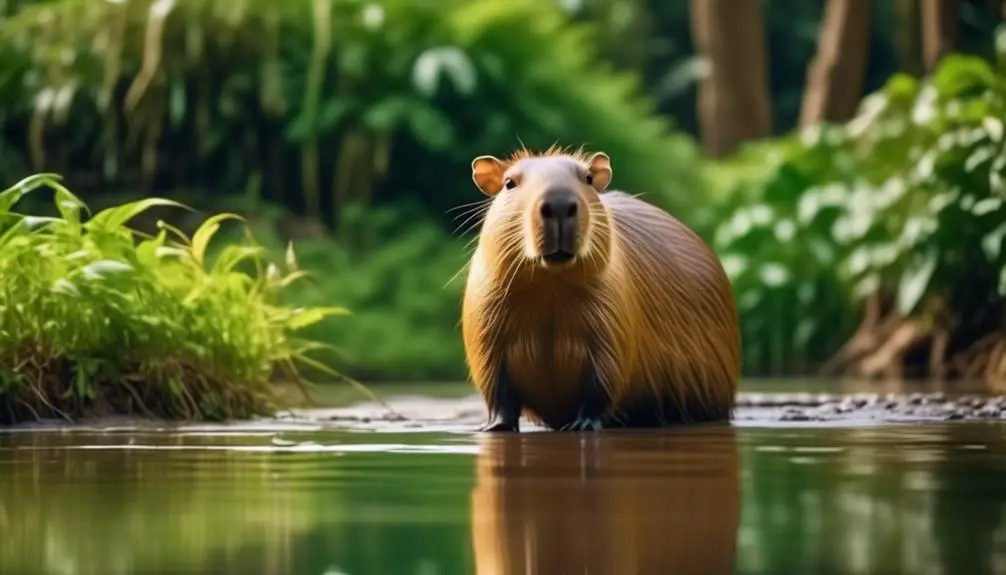
The Capybara, the largest rodent in South America, can reach lengths of 3.48 to 4.40 feet and weigh between 77 to 146 pounds. Found in dense forests across South America, these creatures are truly remarkable. With their impressive size, they’re hard to miss. Capybaras are known for their large, barrel-shaped bodies and short, sturdy legs. Their heads are small, with round ears and eyes that sit on top of their heads, allowing them to keep a watchful eye on their surroundings. Their fur is coarse and varies in color from reddish-brown to dark brown.
Capybaras are highly adaptable and can thrive in a variety of habitats, including marshes, swamps, and grasslands. They’re excellent swimmers and spend a significant amount of time in the water. In fact, their webbed feet and partially webbed toes make them well-suited for aquatic life. Capybaras are social animals and live in large groups called herds. These herds can consist of 10 to 40 individuals, and they’ve a hierarchical structure with a dominant male leading the group.
When it comes to their diet, capybaras are herbivores and primarily feed on grasses and aquatic plants. They’ve large, sharp incisors that help them graze and chew their food efficiently. Capybaras also have a unique digestive system that allows them to ferment plant material, extracting as many nutrients as possible from their diet.
North American Beaver: The Dam-Building Giant
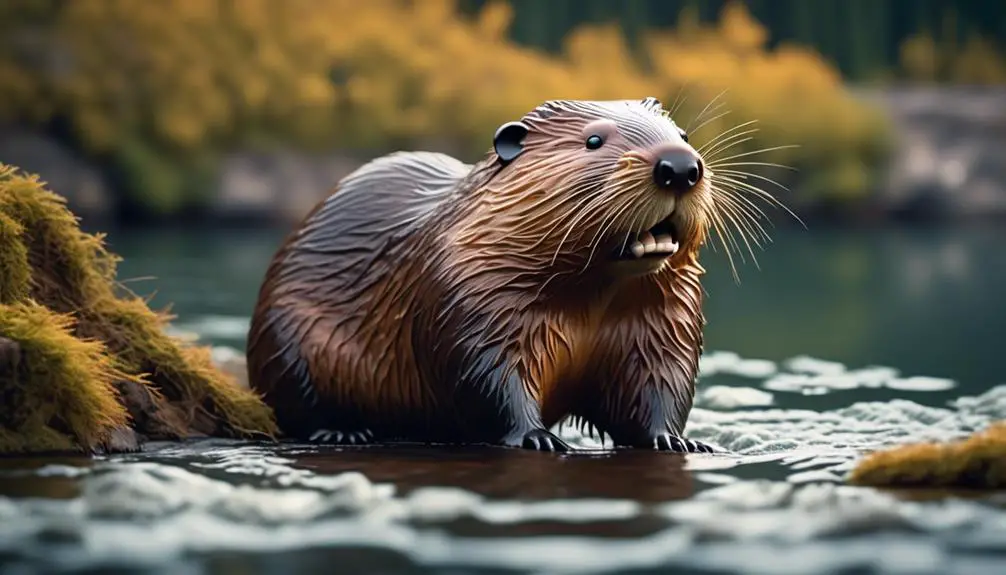
To learn about the North American Beaver, a fascinating dam-building giant, let’s explore its unique characteristics and impressive abilities.
The North American Beaver, scientifically known as Castor Canadensis, is found in North America, making it the largest rodent on the continent. With a length ranging from 29 to 35 inches and a weight ranging from 24 to 71 pounds, these beavers are truly remarkable creatures.
They thrive in habitats such as ponds, lakes, rivers, and streams, where they build elaborate dams using sticks, mud, and rocks. These dams serve multiple purposes, including creating deep water for protection against predators and providing a stable environment for food storage.
The North American Beaver is also well-known for its ability to alter its environment, shaping landscapes to suit its needs. Through their dam-building activities, these beavers create wetlands that support a diverse range of plant and animal species.
Their teeth, which continuously grow, are adapted for gnawing through wood, enabling them to construct these impressive structures.
With their incredible engineering skills and their crucial role in ecosystem conservation, the North American Beaver truly deserves its title of the dam-building giant.
Cape Porcupine: Africa’s Spiky Rodent
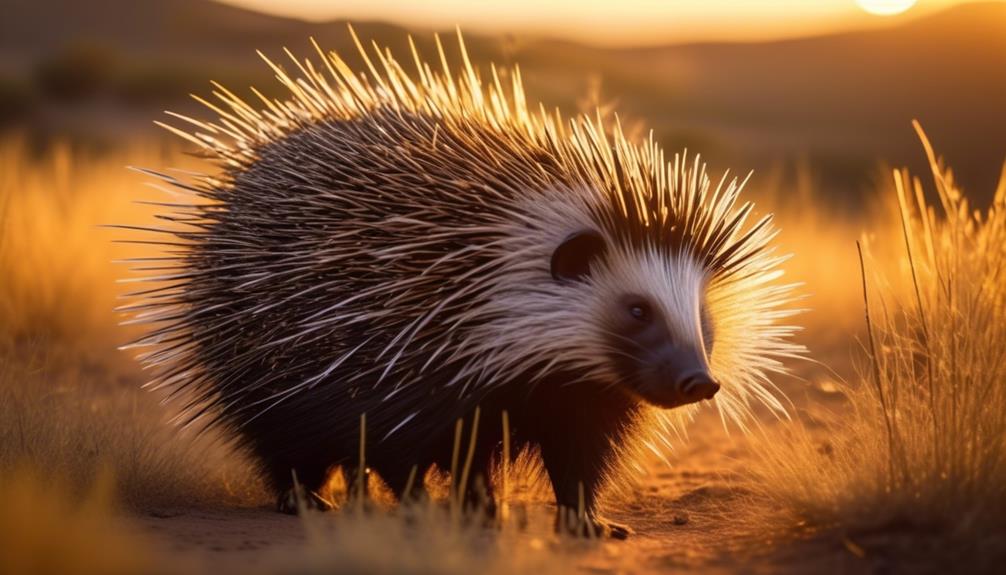
With its spiky quills and fascinating adaptations, the Cape Porcupine stands out as Africa’s unique and intriguing rodent. Found in various regions of Africa, including deserts and dense forests, this rodent has adapted to thrive in diverse habitats.
The Cape Porcupine is known for its large size, measuring between 2.1 to 2.7 feet in length and weighing around 37 to 41 pounds. Its most distinctive feature is its quills, which are modified hairs that cover its body. These quills can reach lengths of up to 20 inches and serve as a defense mechanism against predators. When threatened, the Cape Porcupine raises its quills, creating a formidable barrier. It can also rattle its quills to produce a warning sound.
Apart from its impressive quills, this rodent has strong teeth for gnawing on tough vegetation and roots. It’s primarily herbivorous, feeding on various plants, roots, and bulbs. The Cape Porcupine is a solitary creature that builds burrows for shelter and protection.
Despite its spiky appearance, the Cape Porcupine is an intriguing and integral part of Africa’s diverse ecosystem.
Coypu (Nutria): South America’s Marsh Dweller
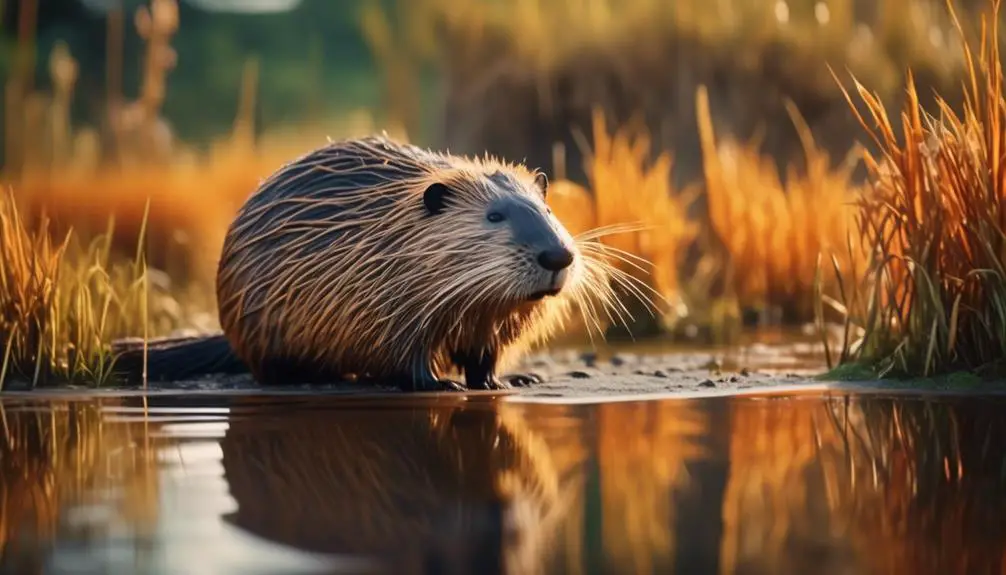
Continuing our exploration of fascinating rodents, let’s now turn our attention to the Coypu (Nutria), a remarkable marsh dweller found in South America. The Coypu, scientifically known as Myocastor coypus, is a large rodent that can grow up to 2.3 to 3.5 feet in length and weigh between 35 to 37 pounds. It’s native to South America and is commonly found in marshes and wetlands.
The Coypu’s unique adaptation to its habitat allows it to thrive in marshy environments. It has webbed hind feet, which make it an excellent swimmer and enables it to navigate through the water with ease. Its dense, waterproof fur helps to keep it warm and dry in the wet marshes.
Nutrias are herbivorous animals, mainly feeding on aquatic plants, roots, and stems. Their strong, sharp incisors allow them to gnaw through vegetation and build their nests. They’re also known to create burrows along riverbanks, which provide them with shelter and protection.
Unfortunately, the Coypu has become an invasive species in many parts of the world, including North America, Europe, and Asia. Their rapid reproduction and destructive feeding habits have led to significant ecological damage in these areas.
Despite the challenges posed by their invasive nature, the Coypu remains an intriguing and adaptable creature. Its ability to thrive in marshy environments and its unique adaptations make it truly remarkable.
Muskrat: North America’s Wetland Resident
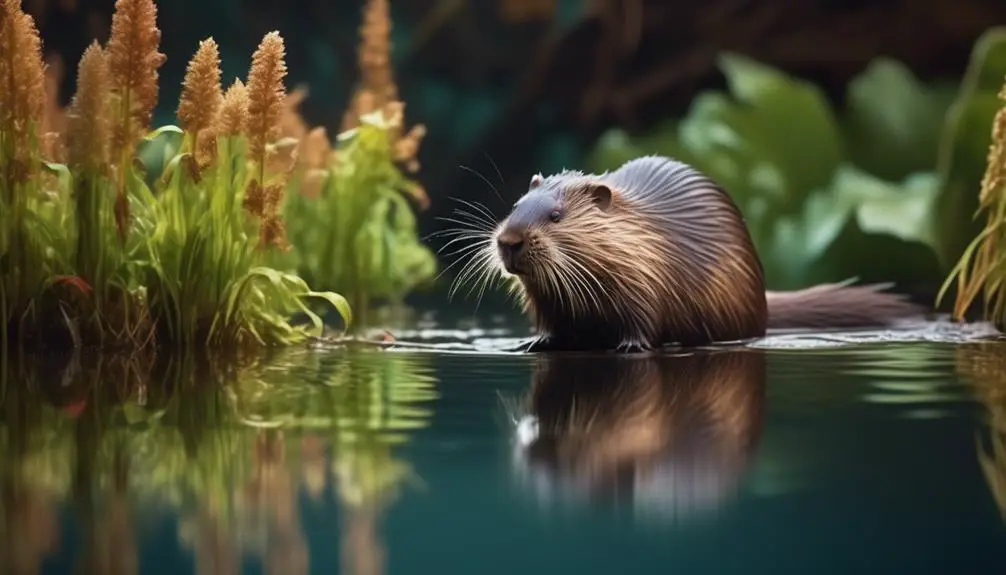
The Muskrat, a wetland resident native to North America, is a small rodent known for its adaptability and unique characteristics. Found in wetlands across North America, this rodent has a length of 16 to 28 inches and weighs between 1.25 to 4.5 pounds. Muskrats are well adapted to their watery habitats, with their waterproof fur and webbed hind feet that make them excellent swimmers.
One of the most distinctive features of the Muskrat is its large, flattened tail. This tail serves multiple purposes, including helping the rodent to steer while swimming and providing stability when it stands upright on land. In addition to their tail, Muskrats have sharp incisors that allow them to gnaw through vegetation and construct their lodges and burrows.
Muskrats are primarily herbivorous, feeding on aquatic plants, cattails, and grasses. They also eat small aquatic animals, such as frogs, snails, and fish, making them omnivorous. This varied diet enables them to thrive in diverse wetland ecosystems.
Muskrats are known for their engineering skills, constructing lodges made of vegetation and mud, with underwater entrances. These lodges provide shelter from predators and maintain a stable environment for the Muskrats. Muskrats are also prolific breeders, with females capable of producing multiple litters each year.
Unique Features: From Poisonous Rodents to Pouch-Bearing Kangaroos
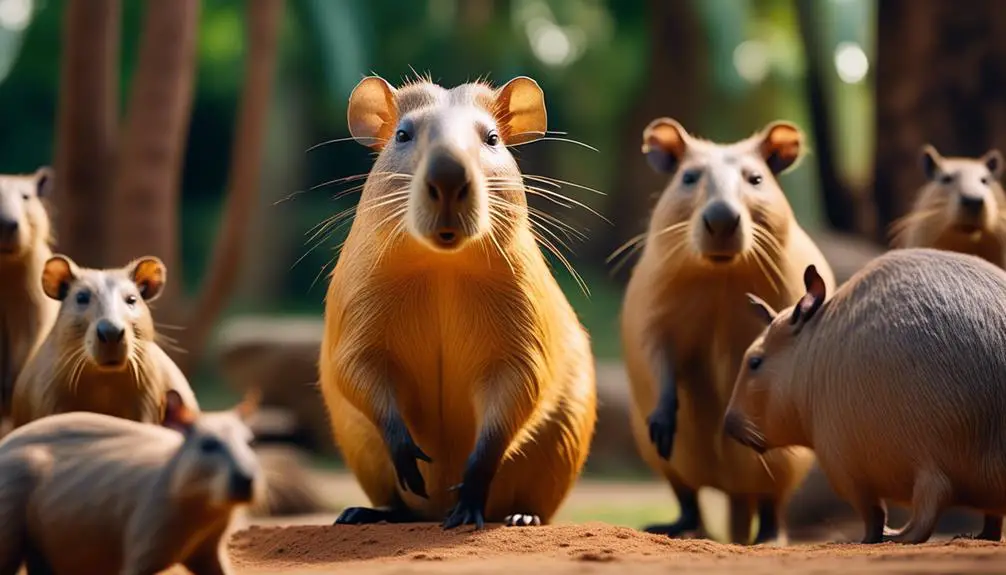
From the most poisonous rodent in the world to pouch-bearing kangaroos, unique features abound in the animal kingdom. One remarkable example is the African crested rat, found in parts of East Africa. It obtains its poison from the bark of certain trees and applies it to its fur. This poison is lethal to predators and can cause severe reactions in humans. The African crested rat uses its bright orange fur as a warning signal to potential predators.
Another intriguing feature is the kangaroo pouch, exclusive to female kangaroos. The pouch is warm and provides a safe environment for their young, called joeys, to develop. Inside the pouch, there are nipples that produce milk for the joeys to feed on. The pouch expands and contracts to accommodate growing joeys, ensuring their comfort and protection.
These unique characteristics highlight the incredible diversity and adaptability of animals. Whether it’s using poison as a defense mechanism or providing a specialized nurturing space for their offspring, animals never fail to amaze us with their extraordinary features.

Erzsebet Frey (Eli Frey) is an ecologist and online entrepreneur with a Master of Science in Ecology from the University of Belgrade. Originally from Serbia, she has lived in Sri Lanka since 2017. Eli has worked internationally in countries like Oman, Brazil, Germany, and Sri Lanka. In 2018, she expanded into SEO and blogging, completing courses from UC Davis and Edinburgh. Eli has founded multiple websites focused on biology, ecology, environmental science, sustainable and simple living, and outdoor activities. She enjoys creating nature and simple living videos on YouTube and participates in speleology, diving, and hiking.

